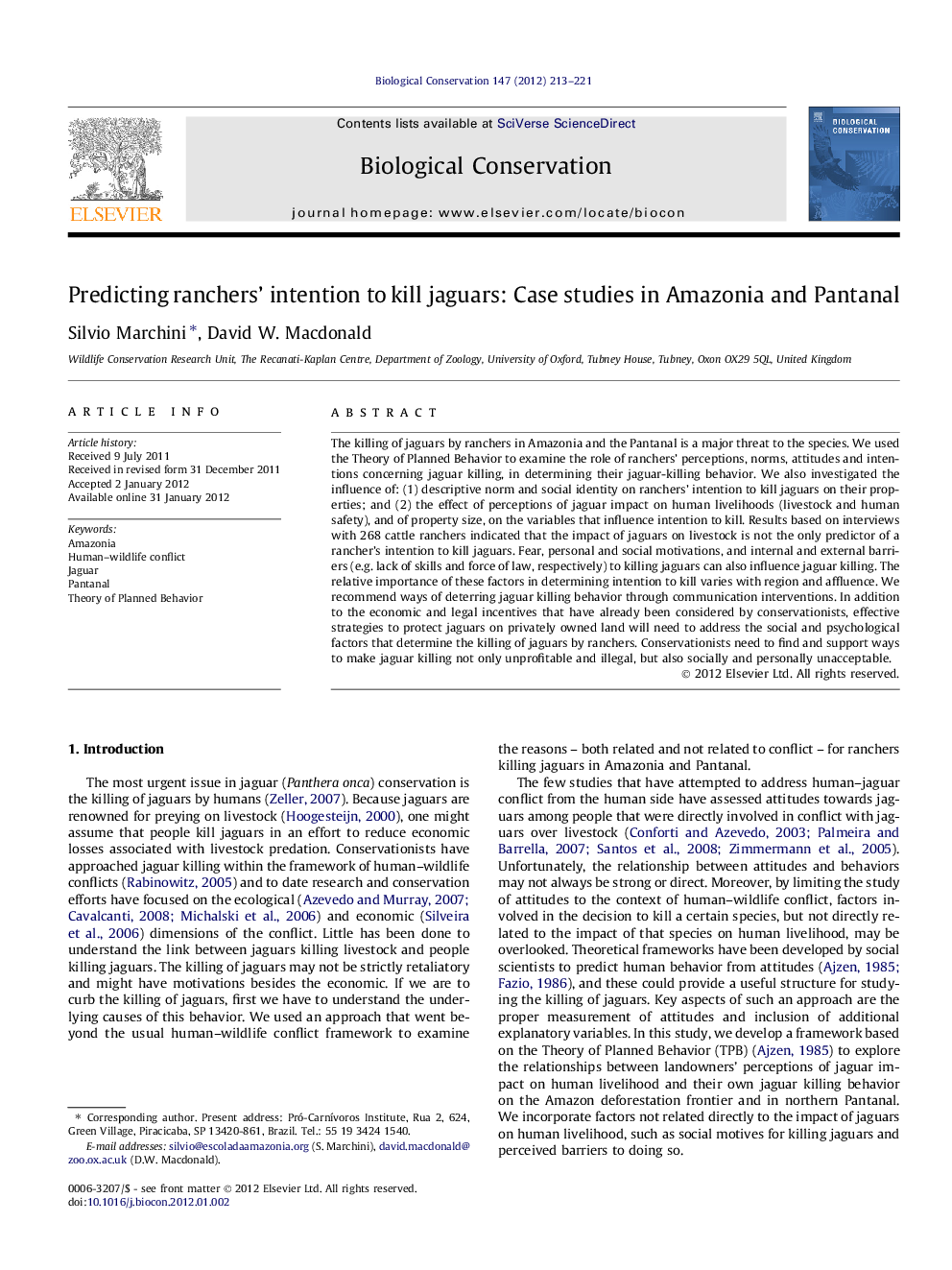| کد مقاله | کد نشریه | سال انتشار | مقاله انگلیسی | نسخه تمام متن |
|---|---|---|---|---|
| 4385300 | 1304531 | 2012 | 9 صفحه PDF | دانلود رایگان |

The killing of jaguars by ranchers in Amazonia and the Pantanal is a major threat to the species. We used the Theory of Planned Behavior to examine the role of ranchers’ perceptions, norms, attitudes and intentions concerning jaguar killing, in determining their jaguar-killing behavior. We also investigated the influence of: (1) descriptive norm and social identity on ranchers’ intention to kill jaguars on their properties; and (2) the effect of perceptions of jaguar impact on human livelihoods (livestock and human safety), and of property size, on the variables that influence intention to kill. Results based on interviews with 268 cattle ranchers indicated that the impact of jaguars on livestock is not the only predictor of a rancher’s intention to kill jaguars. Fear, personal and social motivations, and internal and external barriers (e.g. lack of skills and force of law, respectively) to killing jaguars can also influence jaguar killing. The relative importance of these factors in determining intention to kill varies with region and affluence. We recommend ways of deterring jaguar killing behavior through communication interventions. In addition to the economic and legal incentives that have already been considered by conservationists, effective strategies to protect jaguars on privately owned land will need to address the social and psychological factors that determine the killing of jaguars by ranchers. Conservationists need to find and support ways to make jaguar killing not only unprofitable and illegal, but also socially and personally unacceptable.
Journal: Biological Conservation - Volume 147, Issue 1, March 2012, Pages 213–221